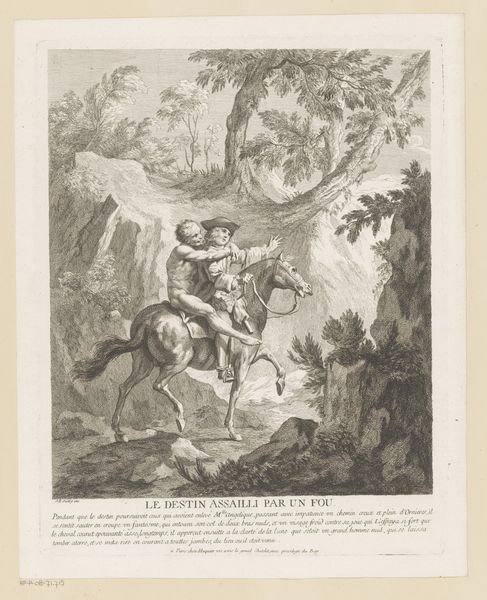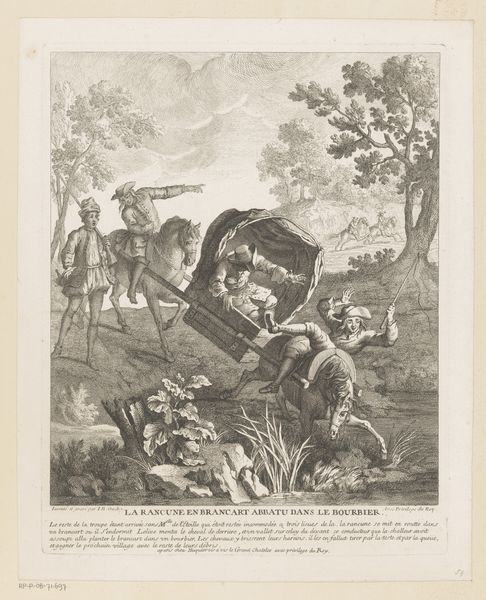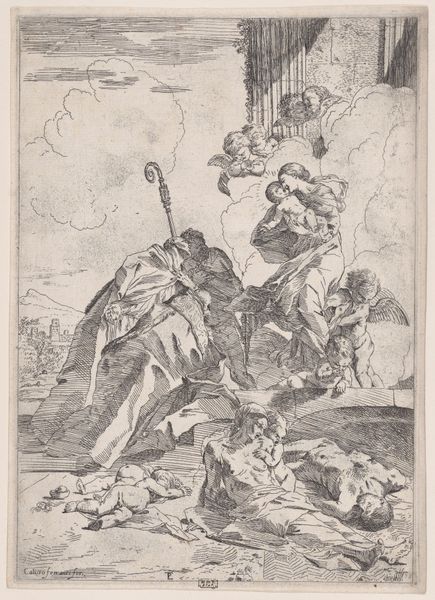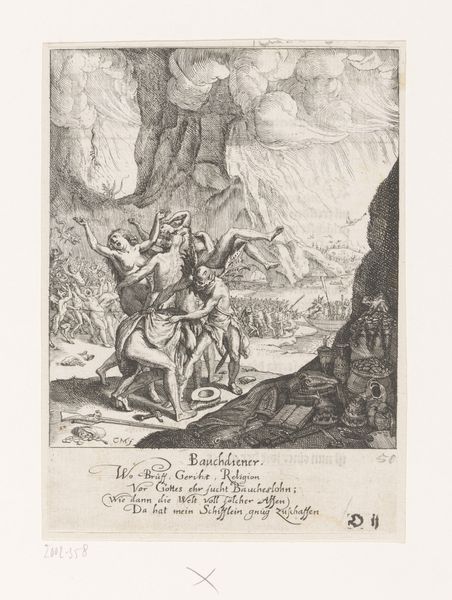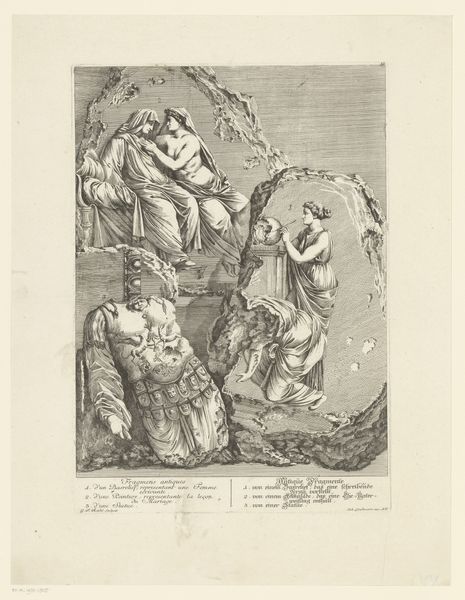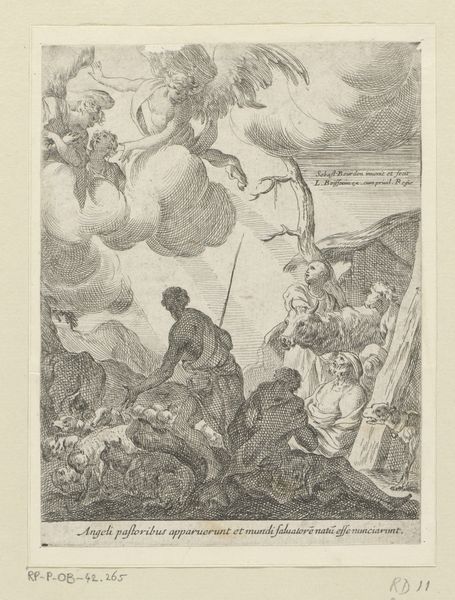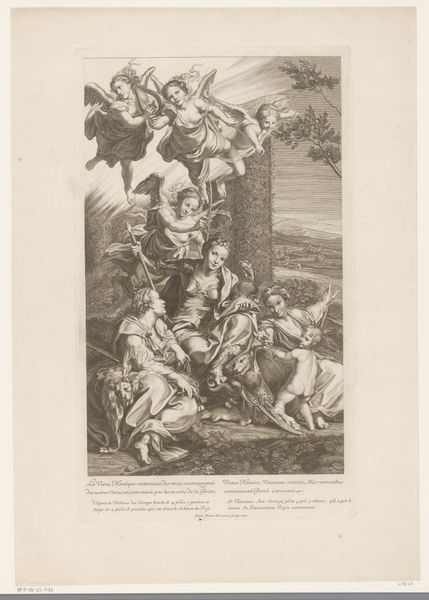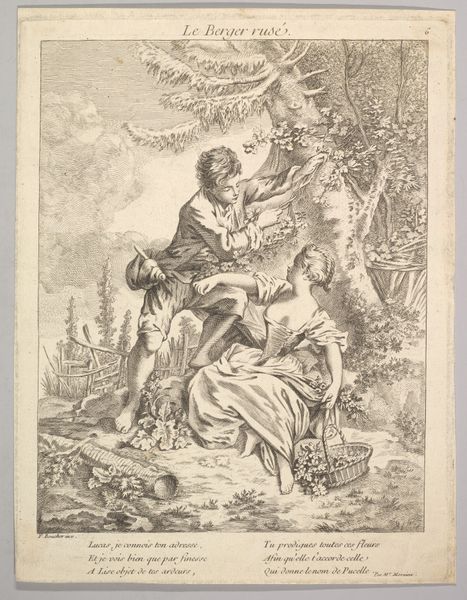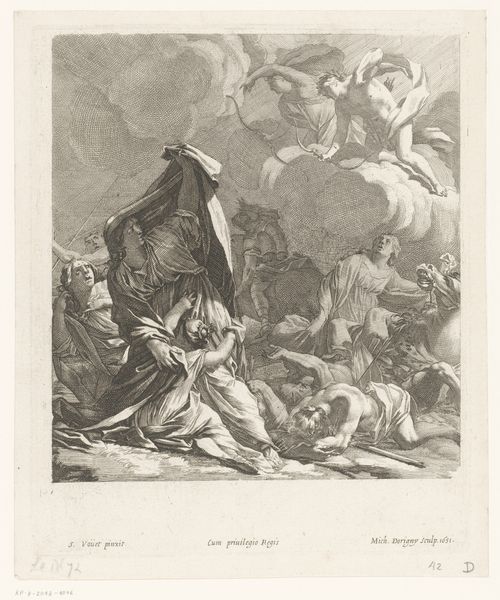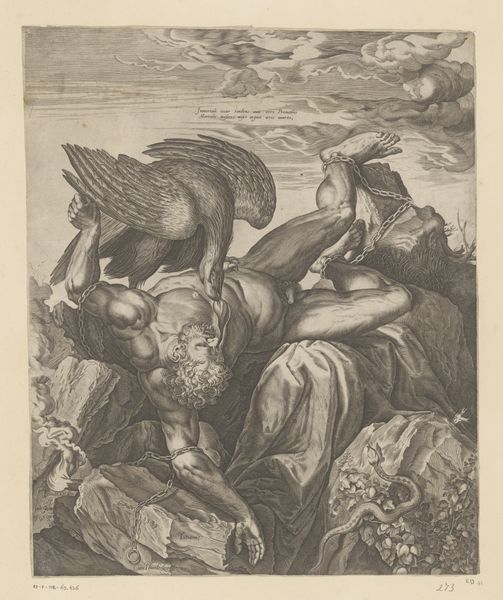
Allegorische voorstelling van een gelauwerde vrouw die een kalebasboom water geeft; op de achtergrond bestijgen figuren een berg 1661
0:00
0:00
engraving
#
allegory
#
baroque
#
landscape
#
figuration
#
line
#
history-painting
#
engraving
Dimensions: height 243 mm, width 169 mm
Copyright: Rijks Museum: Open Domain
This allegorical scene was etched by Guillaume Vallet in the 17th century. Engraving involves using tools to incise lines into a metal plate, which is then inked and printed. In this case, we see a complex scene rendered through nothing more than black lines on white paper. Consider how the linear qualities of the printmaking process influenced the image's composition, imbuing it with social and cultural meaning. Look at the fine details. The textures of the landscape, the fall of the drapery, the modeling of the human form – all created through careful, repetitive mark-making. Printmaking was crucial to disseminating images during this period, and skilled artisans like Vallet were in high demand. Etching allowed for relatively quick reproduction, making art and information more accessible to a wider audience. By attending to materials, making and context, we gain a deeper appreciation for the significance of this print, as well as a challenge to traditional distinctions between fine art and craft.
Comments
No comments
Be the first to comment and join the conversation on the ultimate creative platform.
